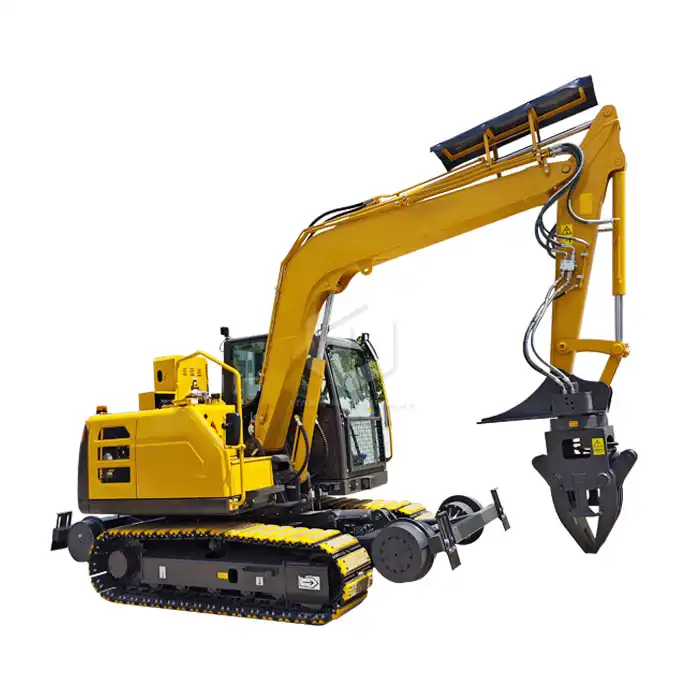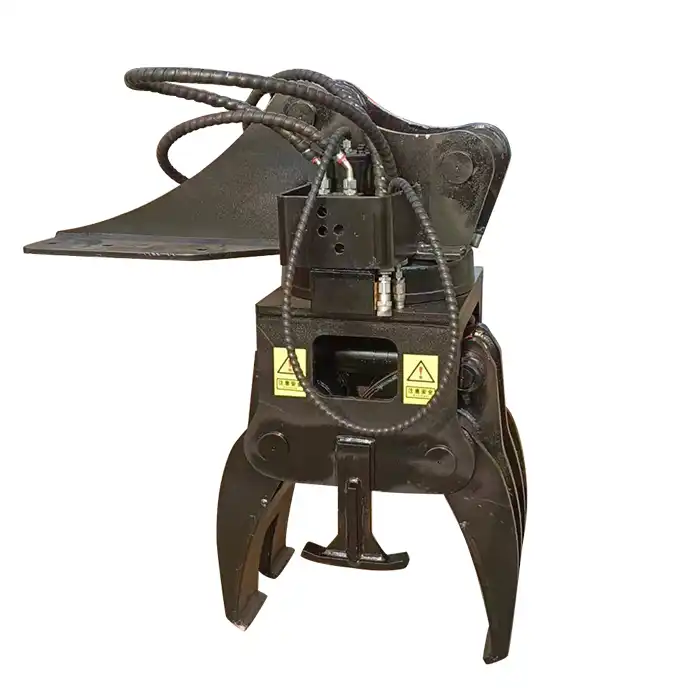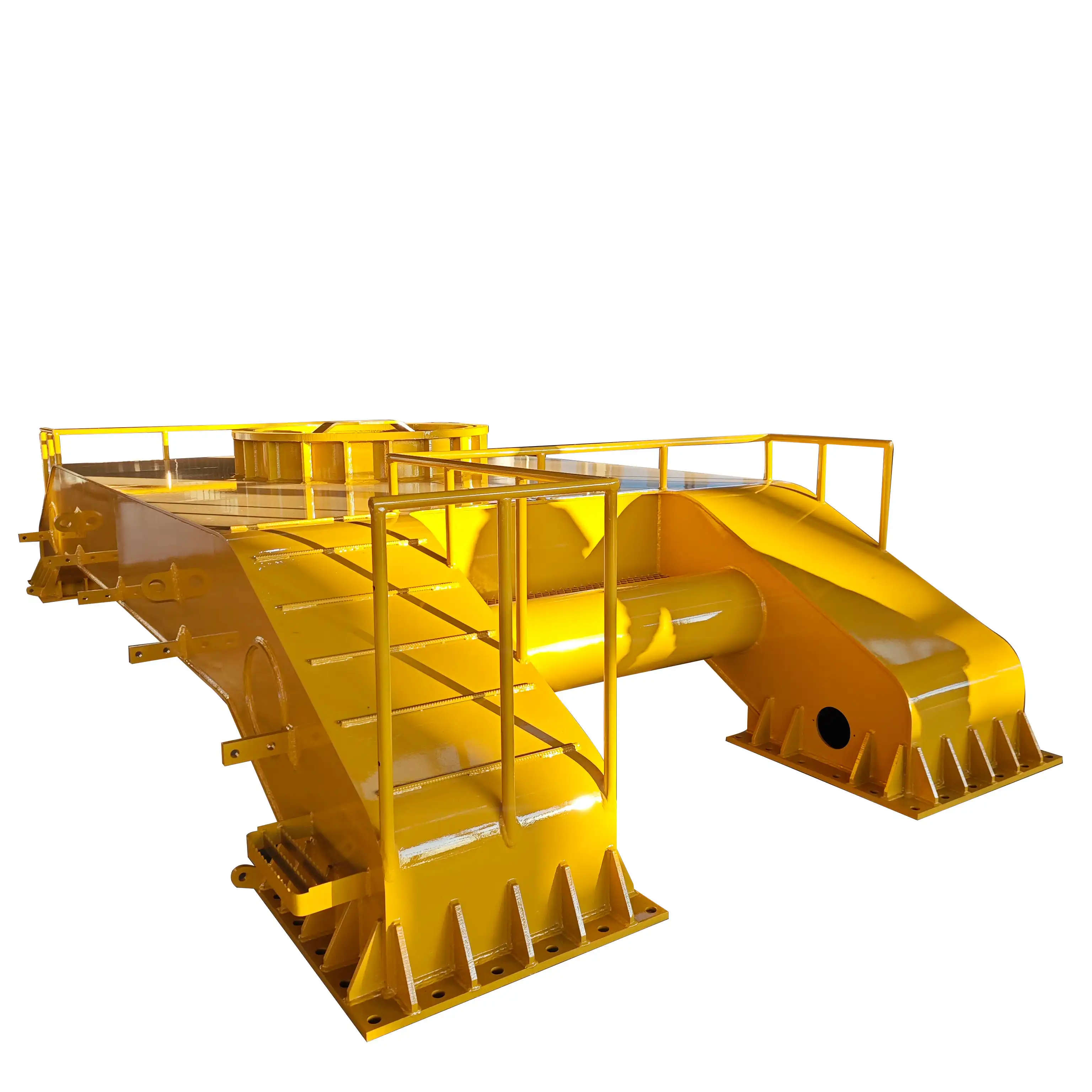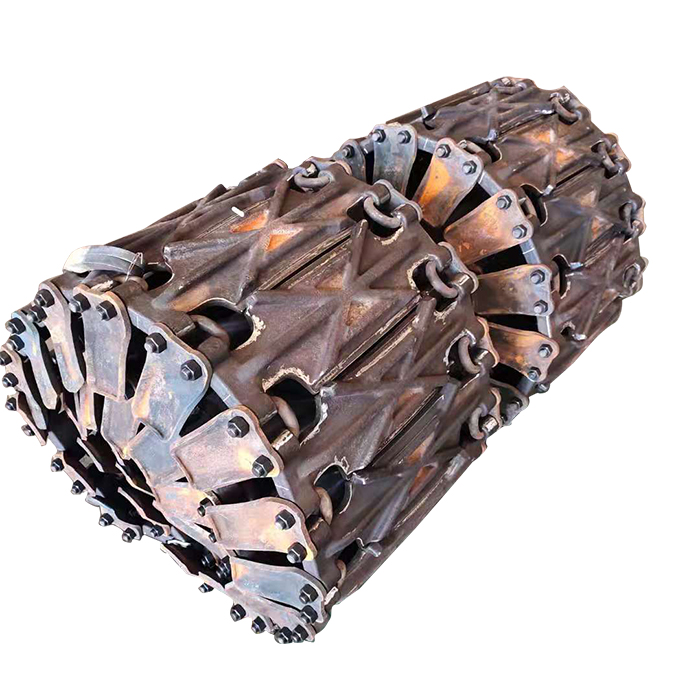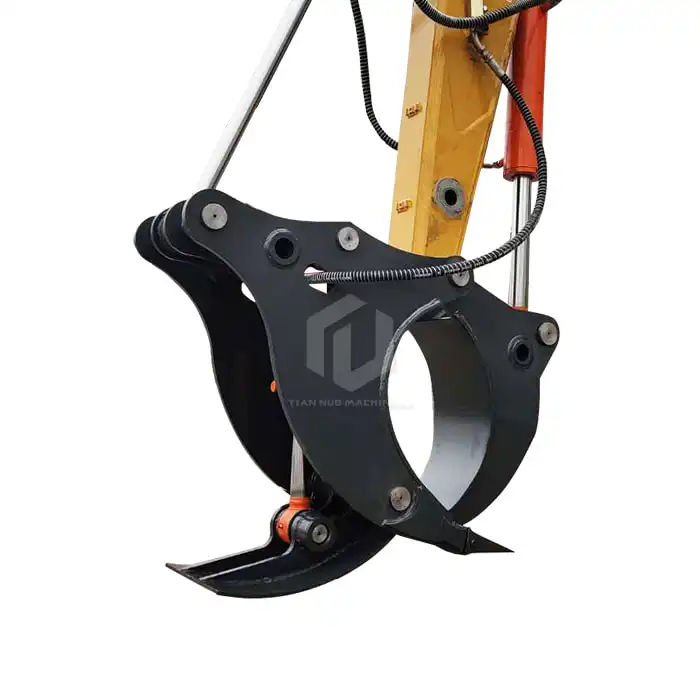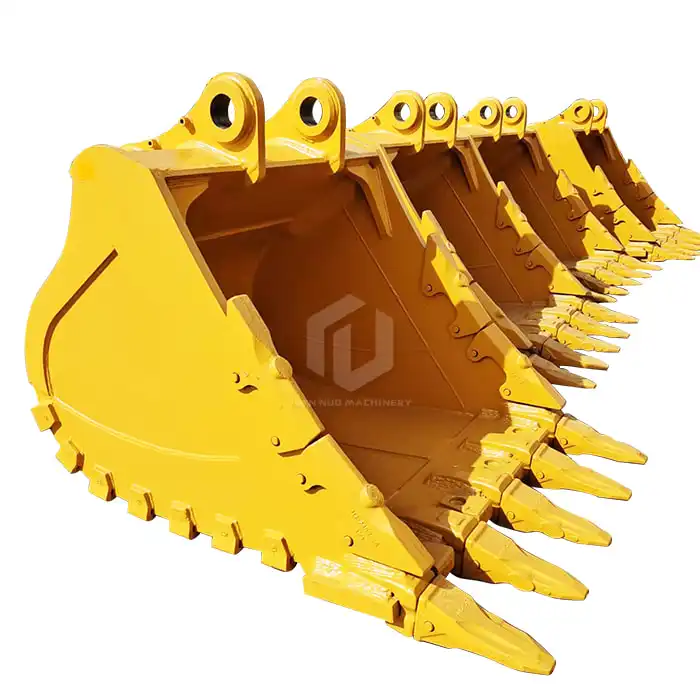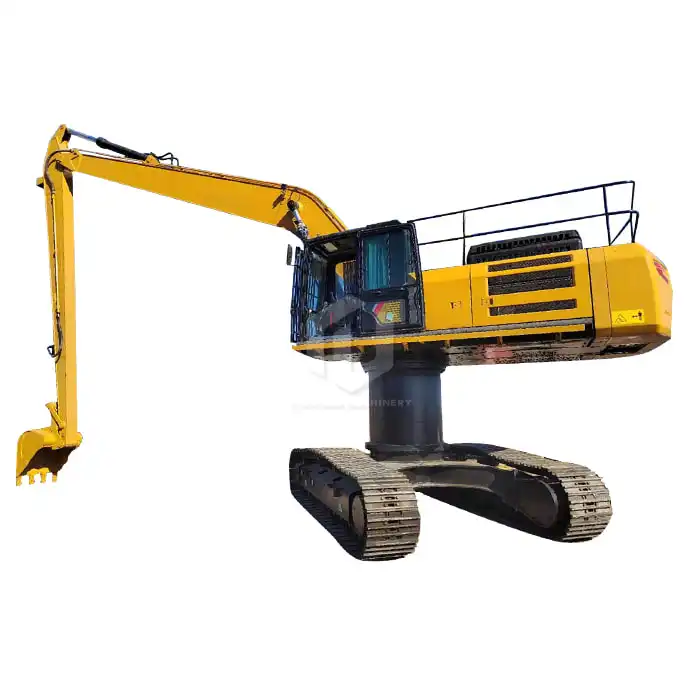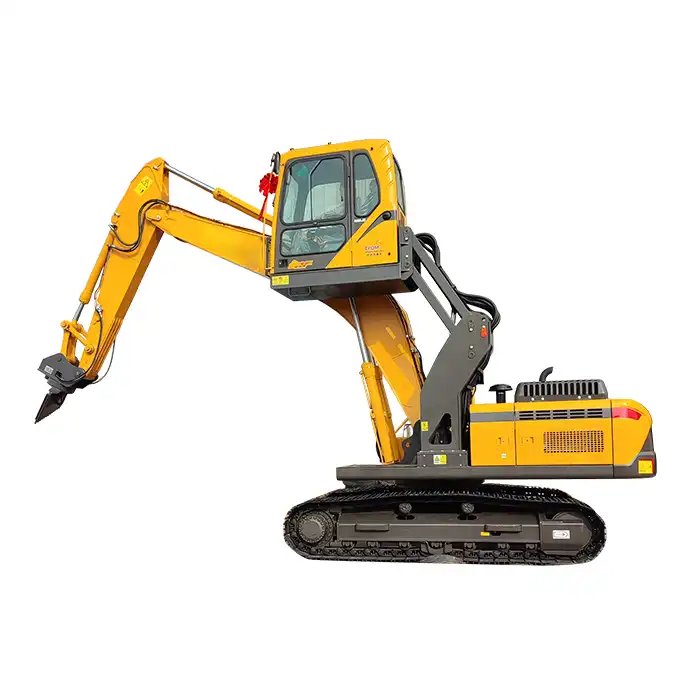Why is 35CrMo used for base plates in loader tire anti-skid tracks?
In the world of heavy machinery, the choice of materials plays a crucial role in determining the efficiency, durability, and safety of equipment. One such material that has gained significant attention in recent years is 35CrMo, particularly for its use in the base plates of loader tire anti-skid tracks. These tracks are essential components that enhance the performance of loaders in challenging terrains and harsh working conditions. Tiannuo explores the properties of 35CrMo, its applications in heavy machinery, and why it's the preferred choice.

Properties of 35CrMo In Heavy Machinery
35CrMo, also known as SAE 4135 or GB 35CrMo, is a low-alloy steel that combines chromium and molybdenum to achieve exceptional mechanical properties. This alloy is widely used in the manufacturing of critical components in heavy machinery, including loader tire anti-skid tracks. Let's delve into the key properties that make 35CrMo an ideal choice for such applications:
1. High Strength-to-Weight Ratio: 35CrMo offers an excellent balance between strength and weight. This property is crucial for anti-skid tracks, as it allows for the construction of robust base plates without significantly increasing the overall weight of the machinery. The high strength-to-weight ratio contributes to improved fuel efficiency and reduced wear on the loader's components.
2. Excellent Toughness: The combination of chromium and molybdenum in 35CrMo results in enhanced toughness, which is vital for withstanding the extreme stresses and impacts experienced by loader tire anti-skid tracks. This toughness ensures that the base plates can absorb and distribute forces effectively, reducing the risk of cracking or failure during operation.
3. Good Hardenability: 35CrMo exhibits superior hardenability, allowing for consistent hardness throughout the cross-section of the base plates. This property ensures uniform wear resistance and structural integrity, even in thicker sections of the anti-skid tracks.
4. Resistance to Fatigue: The cyclic loading that anti-skid tracks endure requires materials with high fatigue resistance. 35CrMo's microstructure and composition provide excellent resistance to fatigue, extending the lifespan of the tracks and reducing the frequency of replacements.
5. Weldability: Despite its high strength, 35CrMo maintains good weldability. This property is essential for the manufacturing and repair of anti-skid tracks, allowing for efficient production processes and easy maintenance in the field.
These properties collectively make 35CrMo an excellent choice for base plates in loader tire anti-skid tracks, providing a balance of strength, durability, and manufacturability that is crucial in heavy machinery applications.
Durability And Wear Resistance Of 35CrMo
The durability and wear resistance of 35CrMo is paramount in the context of loader tire anti-skid tracks. These tracks are subjected to extreme conditions, including abrasive materials, high loads, and constant friction. Let's examine how 35CrMo excels in these challenging environments:
1. Abrasion Resistance: The high hardness achievable in 35CrMo through heat treatment processes results in excellent abrasion resistance. This property is crucial for anti-skid tracks, which are constantly in contact with abrasive materials such as rocks, gravel, and sand. The enhanced abrasion resistance of 35CrMo significantly extends the service life of the tracks, reducing downtime and maintenance costs.
2. Impact Resistance: Loader tire anti-skid tracks frequently encounter sudden impacts from debris and uneven terrain. The combination of strength and toughness in 35CrMo allows it to absorb these impacts without permanent deformation or cracking. This impact resistance ensures the longevity of the tracks and maintains their effectiveness in providing traction.
3. Thermal Stability: In heavy-duty applications, the base plates of anti-skid tracks can experience significant temperature fluctuations due to friction and environmental factors. 35CrMo maintains its mechanical properties over a wide range of temperatures, ensuring consistent performance in various operating conditions.
4. Resistance to Surface Fatigue: The repeated loading and unloading cycles experienced by anti-skid tracks can lead to surface fatigue and pitting. 35CrMo's microstructure and composition provide excellent resistance to these phenomena, preserving the surface integrity of the base plates and maintaining optimal traction over time.
5. Corrosion Resistance: While not as corrosion-resistant as stainless steel, 35CrMo offers adequate protection against environmental factors when properly treated. This property is particularly important for anti-skid tracks used in humid or corrosive environments, such as coastal areas or chemical processing facilities.
The durability and wear resistance of 35CrMo translate directly into tangible benefits for operators of heavy machinery equipped with loader tire anti-skid tracks. These include reduced maintenance frequency, lower replacement costs, and improved overall equipment efficiency. The longevity of 35CrMo base plates ensures that the tracks maintain their effectiveness in providing traction and stability throughout their service life, contributing to safer and more productive operations.
Comparison Of 35CrMo With Alternative Materials
To fully appreciate the advantages of using 35CrMo for base plates in loader tire anti-skid tracks, it's essential to compare it with alternative materials that could potentially be used for the same application. This comparison will highlight why 35CrMo is often the preferred choice:
1. 35CrMo vs. Carbon Steel (e.g., 45# Steel):
- Strength: 35CrMo typically offers higher tensile and yield strengths compared to carbon steels like 45# steel, resulting in better load-bearing capacity for loader tire anti-skid tracks.
- Toughness: The addition of chromium and molybdenum in 35CrMo provides superior toughness and impact resistance compared to plain carbon steels.
- Wear Resistance: 35CrMo exhibits better wear resistance due to its ability to achieve higher hardness levels through heat treatment.
- Cost: While 35CrMo is generally more expensive than carbon steel, its superior properties often justify the additional cost in terms of longer service life and improved performance.
2. 35CrMo vs. Stainless Steel (e.g., 304 Stainless Steel):
- Strength: 35CrMo typically has higher strength than austenitic stainless steels like 304, making it more suitable for heavy-load applications in loader tire anti-skid tracks.
- Corrosion Resistance: Stainless steel offers superior corrosion resistance, but this level of protection is often unnecessary for most loader applications, where the corrosion resistance of properly treated 35CrMo is sufficient.
- Cost: 35CrMo is significantly less expensive than stainless steel, making it a more cost-effective choice for large components like base plates in anti-skid tracks.
- Machinability: 35CrMo is generally easier to machine than stainless steel, which can lead to lower manufacturing costs and more precise components.
3. 35CrMo vs. High-Strength Low-Alloy (HSLA) Steels:
- Strength: While some HSLA steels can match or exceed the strength of 35CrMo, they may not offer the same combination of strength, toughness, and wear resistance.
- Heat Treatment: 35CrMo responds well to heat treatment, allowing for a wider range of mechanical properties to be achieved. This flexibility is advantageous when optimizing base plates for specific loader tire anti-skid track applications.
- Fatigue Resistance: 35CrMo often demonstrates superior fatigue resistance compared to many HSLA steels, which is crucial for the cyclic loading experienced by anti-skid tracks.
- Availability and Familiarity: 35CrMo is widely available and well-understood in the heavy machinery industry, which can simplify sourcing, manufacturing, and maintenance processes.
4. 35CrMo vs. Tool Steels:
- Toughness: While some tool steels can achieve higher hardness levels than 35CrMo, they often lack the toughness required for the dynamic loads experienced by anti-skid tracks.
- Cost: Tool steels are typically more expensive than 35CrMo, making them less economical for large components like base plates.
- Weldability: 35CrMo generally offers better weldability compared to many tool steels, which is important for manufacturing and repairing anti-skid tracks.
- Versatility: The balance of properties offered by 35CrMo makes it more versatile for various operating conditions, whereas tool steels may be optimized for specific wear scenarios but lack in other areas.
In conclusion, while alternative materials may excel in specific properties, 35CrMo offers an optimal balance of strength, toughness, wear resistance, and cost-effectiveness for base plates in loader tire anti-skid tracks. Its versatility and well-understood characteristics make it a reliable choice for manufacturers and operators of heavy machinery, ensuring consistent performance in challenging environments [3].
Tiannuo Machinery Loader Tire Anti-Skid Track
The use of 35CrMo in base plates for loader tire anti-skid tracks exemplifies the importance of material selection in heavy machinery applications. Its unique combination of properties, including high strength, excellent toughness, and superior wear resistance, make it an ideal choice for this demanding application. By utilizing 35CrMo, manufacturers can produce anti-skid tracks that offer enhanced durability, improved performance, and lower long-term costs for operators.
Tiannuo Machinery is a leading manufacturer and supplier specializing in the production of loader anti-skid crawlers. With over 10 years of experience in the large equipment industry, we offer top-quality solutions for your heavy machinery needs. Upgrade your 50-ton Loader with our 23.5-25 model standard tire anti-skid tracks, designed to enhance operational efficiency and safety. Each track consists of 27 links, made up of a baseboard, side plate, and bolts. The baseboard is crafted from 35CrMo material, while the side plate is made of 45# carbon steel. The chain plates are forged for durability and reliability. Weighing 530 KG per track, these tracks offer superior puncture-resistance, impact-resistance, and anti-slip properties, making them ideal for use in mines, quarries, tunnels, and other harsh environments.
Take action now to provide additional protection for your equipment, reduce tire wear, increase work efficiency, and ensure job safety. If you are choosing your loader tire anti-skid track manufacturer, we welcome you to contact us. Our manager's email is arm@stnd-machinery.com and the team's emails are rich@stnd-machinery.com and tn@stnd-machinery.com. Let Tiannuo Machinery be your partner in optimizing your heavy machinery operations with our high-quality anti-skid tracks.
References:
[1] ASM International. (2001). ASM Handbook, Volume 1: Properties and Selection: Irons, Steels, and High-Performance Alloys. Materials Park, OH: ASM International.
[2] Bhadeshia, H. K. D. H., & Honeycombe, R. (2017). Steels: Microstructure and Properties. Butterworth-Heinemann.
[3] Davis, J. R. (Ed.). (1998). Metals Handbook Desk Edition (2nd ed.). ASM International.

